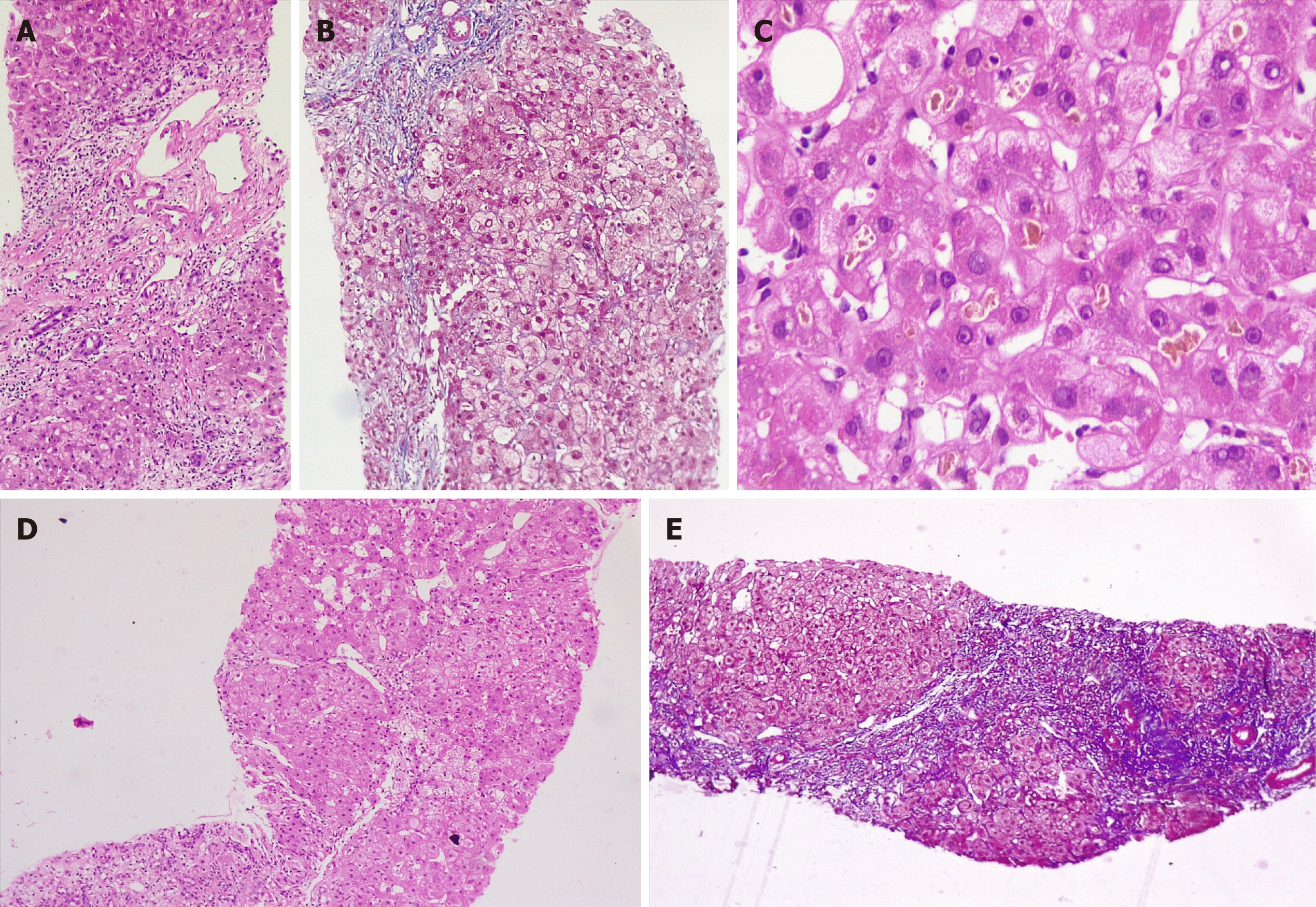Copyright
©The Author(s) 2020.
World J Hepatol. Sep 27, 2020; 12(9): 574-595
Published online Sep 27, 2020. doi: 10.4254/wjh.v12.i9.574
Published online Sep 27, 2020. doi: 10.4254/wjh.v12.i9.574
Figure 8 Development of acute severe cholestatic hepatitis leading to chronic herb-induced liver injury resulting in cirrhosis in a young female, after ingestion of Valerian (Tagara®).
Percutaneous liver biopsy performed in August 2019 (A-C) revealed portal and periportal necrosis with mixed lobular inflammation [A, hematoxylin and eosin (H&E) stain, 100 ×], pale blue staining in the regions of necrosis and hepatocyte loss is notable on Masson-trichrome staining (B, 200 ×); hepatocellular and canalicular cholestasis is notable (C, H&E, 400 ×); on follow-up, liver biopsy showed progression of fibrosis with vague hepatocyte nodule formation (D, H&E, 200 ×) with central to central and central to portal bridging fibrosis suggestive of cirrhosis and nodule formation on Masson-trichrome stain (E, 100 ×).
- Citation: Philips CA, Ahamed R, Rajesh S, George T, Mohanan M, Augustine P. Comprehensive review of hepatotoxicity associated with traditional Indian Ayurvedic herbs. World J Hepatol 2020; 12(9): 574-595
- URL: https://www.wjgnet.com/1948-5182/full/v12/i9/574.htm
- DOI: https://dx.doi.org/10.4254/wjh.v12.i9.574









